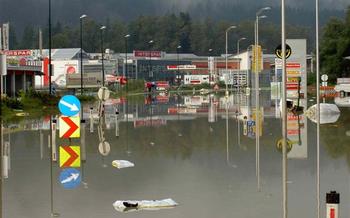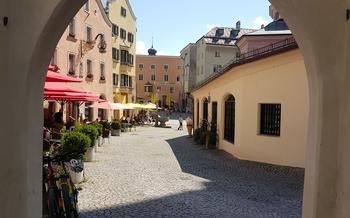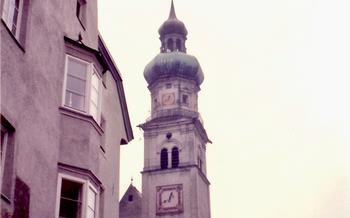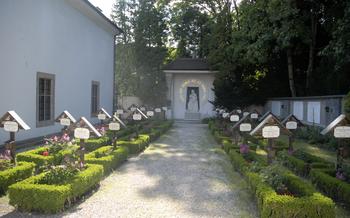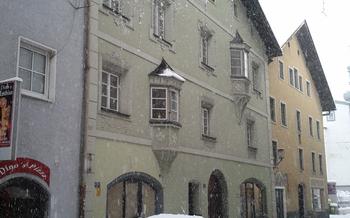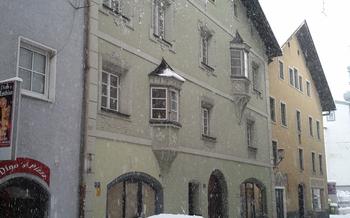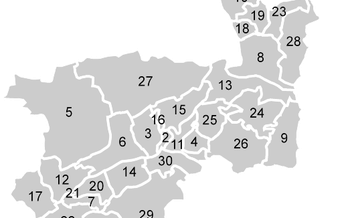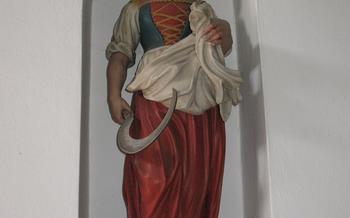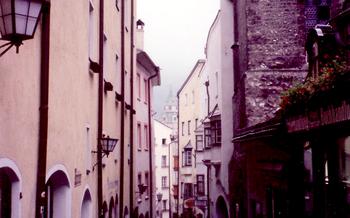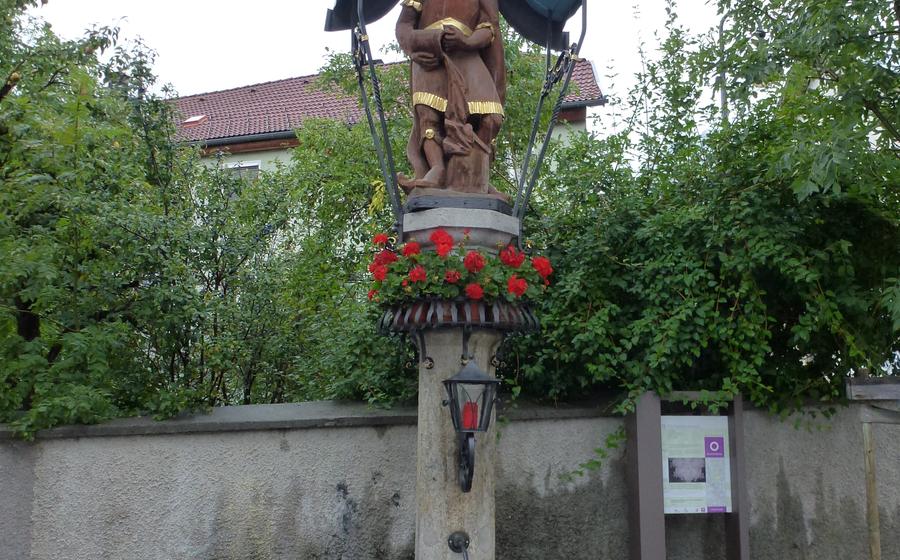
Gurgltal Miner's World
- Unraveling the Secrets of the Mines
- Witnessing the Miner's Legacy
- Into the Heart of the Mountain
- Museum of Mining History Imst
- Silver Mine Schwaz
- Hall in Tirol Salt Mine: A Journey Through Time and Salt
- Brixlegg Copper Mine
- Gold Mine Muhlbach: Striking Gold in the Heart of the Alps
- Mining Museum Nassereith
- Mining Museum Schwaz
- Mining Museum Brixlegg
- Mining Museum Hall in Tirol
- Mining Museum Imst
- Insider Tip: Panning for Gold
Unraveling the Secrets of the Mines
The Gurgltal Miner's World offers a fascinating glimpse into the world of mining, showcasing the different techniques used to extract valuable minerals from the depths of the earth. Visitors can learn about the history of mining in the region, dating back to the Middle Ages, and discover the tools and equipment used by miners over the centuries. The tour guides provide insights into the harsh working conditions and safety risks faced by the miners, as well as the geological formations found in the mines. From the primitive methods of early mining to the advanced machinery used in modern times, the Miner's World offers a comprehensive exploration of the mining industry.
Witnessing the Miner's Legacy
The Gurgltal Miner's World is not just about exploring the mines themselves; it also delves into the rich legacy and traditions of the miners who worked here. Visitors can pay their respects at the Miner's Chapel, a place of solace and remembrance for those who lost their lives in the mines. The Miner's Memorial stands as a tribute to the fallen miners, honoring their sacrifices and contributions to the region.
Miner's Chapel
The Miner's Chapel, located in the heart of the Gurgltal, is a poignant reminder of the dangers and sacrifices faced by the miners. Built in the 16th century, the chapel served as a place of worship and solace for the miners and their families. Inside, visitors can see the names of those who perished in the mines, inscribed on plaques that line the walls. The chapel's serene atmosphere invites visitors to reflect on the lives and legacies of the miners.
Miner's Memorial
The Miner's Memorial, situated near the entrance to the Gurgltal Miner's World, stands as a tribute to the fallen miners. The memorial features a bronze statue of a miner, surrounded by the names of those who lost their lives in the mines. Visitors can take a moment to remember the sacrifices made by these brave men and honor their contribution to the region's mining heritage.
Miner's Museum
The Miner's Museum, located in the village of Imst, offers a fascinating glimpse into the history of mining in the Gurgltal. The museum showcases a collection of mining tools, equipment, and artifacts that provide insights into the miners' working conditions and techniques. Visitors can learn about the different types of mining that took place in the region and the challenges faced by the miners. The museum also hosts temporary exhibitions and events that delve deeper into the region's mining heritage.
Miner's Festival
Each year, the Gurgltal Miner's World hosts the Miner's Festival, a lively celebration of the region's mining heritage. The festival features traditional music, dancing, and food, as well as demonstrations of mining techniques and equipment. Visitors can experience the camaraderie and traditions of the miners while enjoying a fun-filled day of festivities. The festival is a testament to the enduring spirit of the miners and the importance of preserving their legacy.
Into the Heart of the Mountain
Embark on a guided tour of the mine shafts and tunnels, and feel the thrill of exploring a subterranean world.
The Gurgltal Miner's World offers a variety of guided tours that take you deep into the heart of the mountain. These tours provide a unique opportunity to explore the mine shafts and tunnels, marvel at the impressive machinery used for mining operations, and listen to captivating stories about the lives of the miners.
As you descend into the depths of the mine, you will be amazed by the sheer scale and complexity of the underground workings. The tunnels, some of which are centuries old, wind their way through the rock, leading to vast chambers where the miners once extracted valuable ores. Along the way, you will see the tools and equipment that were used to drill, blast, and transport the ore, as well as the ingenious systems that were developed to keep the mines safe and ventilated.
Your guide will share fascinating stories about the miners who worked in these harsh and dangerous conditions. You will learn about their daily lives, their hopes and dreams, and the risks they took to earn a living. You will also hear about the accidents and tragedies that occurred in the mines, and the courage and resilience of the miners who survived.
Exploring the mine shafts and tunnels of the Gurgltal Miner's World is a truly immersive experience that will give you a deep appreciation for the hard work, ingenuity, and courage of the miners who played a vital role in the development of the region.
Museum of Mining History Imst
Mining Museum History Imst offers a comprehensive overview of the history of mining in the region, from its humble beginnings to its peak in the 19th century. Through interactive exhibits and captivating displays, the museum brings to life the stories of the miners who worked in the mines and the challenges they faced. Explore the various mining techniques used over the centuries, the tools and equipment that miners relied on, and the impact that mining had on the social and economic development of the region. Learn about the different types of minerals that were mined in the Gurgltal and their significance in various industries. Don't miss the chance to see rare and precious minerals up close, and gain a deeper understanding of the fascinating world of mining.
Silver Mine Schwaz
Descend into the depths of history at the Silver Mine Schwaz, a testament to the region's rich mining heritage.
Once a bustling hub of mining activity, the Silver Mine Schwaz stands as a testament to the region's rich mining heritage. Embark on a journey through time as you descend into the depths of this historic mine, experiencing firsthand the working conditions of miners in the 15th and 16th centuries.
Explore the intricate network of tunnels and chambers, carved out by hand over centuries of relentless labor. Discover the mining techniques used to extract silver from the ore, and marvel at the impressive machinery and tools that facilitated the extraction process.
Immerse yourself in the stories of the miners who dedicated their lives to this perilous pursuit, facing countless dangers and hardships in their quest for silver. Learn about the challenges they encountered, the risks they took, and the sacrifices they made to bring this precious metal to the surface.
As you delve deeper into the mine, admire the stunning geological formations and the glittering veins of silver that once fueled the region's economy. Experience the unique atmosphere of this subterranean world, where the echoes of history still reverberate.
The Silver Mine Schwaz is not just a museum; it's a living testament to the ingenuity, perseverance, and determination of the miners who shaped the region's destiny. Step into their footsteps and embark on a journey that will transport you back in time to a world where silver was king.
Hall in Tirol Salt Mine: A Journey Through Time and Salt
Located in the heart of the Tyrolean Alps, the Hall in Tirol Salt Mine is a testament to the region's rich mining history. Embark on a journey through time as you descend into the depths of this ancient mine, one of the oldest in the world.
Discover the fascinating history of salt mining in the region, dating back to the Middle Ages. Learn about the ingenious techniques used by miners to extract salt from the earth, and the crucial role that salt played in the economy and culture of Tyrol.
Explore the intricate network of underground chambers and tunnels, carved out by hand over centuries. Marvel at the stunning salt formations and crystal-clear salt lakes that adorn the mine's interior. Experience the unique atmosphere of this subterranean world, where time seems to stand still.
The Hall in Tirol Salt Mine offers a truly unforgettable experience for visitors of all ages. Immerse yourself in the history, culture, and geology of this remarkable site, and gain a deeper appreciation for the invaluable contribution of salt mining to the region's heritage.
Brixlegg Copper Mine
A Journey Through Copper's Legacy
Nestled amidst the picturesque landscapes of Tyrol, Austria, lies the Brixlegg Copper Mine, a testament to the region's rich mining heritage. Embark on a journey into the depths of this historic mine, where copper was extracted for over five centuries, shaping the region's economy and culture.
Discover the captivating tales of the miners who toiled tirelessly in these underground tunnels, extracting the precious copper ore that fueled the development of civilization. Explore the mine's intricate network of shafts and chambers, marveling at the tools and equipment used by the miners to extract the copper from the earth.
Learn about the intricate techniques employed to separate the copper from the ore, a process that required skill, patience, and a deep understanding of metallurgy. Witness the impressive machinery that facilitated the mining operations, transporting the ore to the surface and processing it to reveal its valuable contents.
Through interactive exhibits and guided tours, the Brixlegg Copper Mine brings to life the fascinating history of copper mining in the region. Immerse yourself in the stories of the miners, their triumphs and struggles, and gain a newfound appreciation for the role that copper has played in shaping our world.
Gold Mine Muhlbach: Striking Gold in the Heart of the Alps
Nestled amidst the picturesque landscapes of the Gurgltal, the Gold Mine Muhlbach beckons with the allure of golden treasures and a glimpse into the region's rich mining heritage. Delve into the fascinating history of gold mining in the region, dating back to the 16th century when prospectors first discovered traces of the precious metal in the local streams. Learn about the techniques and tools used by miners to extract gold from the ore, and the challenges they faced in their pursuit of wealth.
Embark on an unforgettable adventure as you explore the mine's underground tunnels and chambers, once the domain of hardworking miners. Marvel at the intricate network of shafts and galleries, and imagine the miners' toil as they diligently extracted gold from the surrounding rock. Discover the tools they used, from simple picks and shovels to more sophisticated machinery, and gain insights into the backbreaking labor and risks they endured in their quest for riches.
For a hands-on experience, try your luck at panning for gold in the nearby river. With a bit of patience and skill, you might just strike gold and uncover your own precious treasure. Whether you find gold or not, the thrill of the search and the connection to the region's mining history make this activity a truly memorable one.
Mining Museum Nassereith
The Mining Museum Nassereith is a fascinating journey into the history of mining in the Nassereith region. Located in the heart of the town, the museum showcases the rich mining heritage of the area, which dates back to the Middle Ages. Visitors can explore exhibits on various types of mining that took place in the region, including silver, lead, and zinc mining. The museum's collection includes mining tools, equipment, and machinery, as well as historical documents and photographs that provide insights into the lives of the miners and the challenges they faced.
Through interactive displays and informative panels, the museum tells the story of the mining industry's impact on the social, economic, and cultural development of the Nassereith region. Visitors can learn about the mining techniques used over the centuries, the safety risks and working conditions faced by the miners, and the importance of mining in shaping the landscape and economy of the area. The museum also highlights the stories of individual miners, their contributions to the industry, and the legacy they left behind.
A visit to the Mining Museum Nassereith is a valuable opportunity to gain a deeper understanding of the region's mining heritage and appreciate the hard work and dedication of the miners who played a crucial role in shaping the history of Nassereith. The museum offers guided tours that provide additional insights and anecdotes, making it an immersive and educational experience for visitors of all ages.
Mining Museum Schwaz
Nestled in the heart of the historic silver mining town of Schwaz, the Mining Museum Schwaz invites visitors on a journey through the region's rich mining heritage. As you step into the museum, you'll be transported back in time to the days when silver was king.
Explore interactive exhibits that showcase the tools, equipment, and techniques used by the miners of yesteryear. Learn about the challenges they faced, the risks they took, and the rewards they reaped. Discover the social and cultural impact of mining on the development of the town and the region as a whole.
The museum's collection includes a wide range of artifacts, from mining machinery and tools to minerals and ores. You'll also find exhibits on the history of mining in Schwaz, from its humble beginnings to its rise as one of the most important silver mining centers in medieval Europe.
One of the highlights of the museum is the outdoor panning area, where you can try your hand at panning for gold. This is a fun and rewarding activity for all ages, and you might just be lucky enough to find a gold nugget to take home as a souvenir of your visit.
Mining Museum Brixlegg
The Mining Museum Brixlegg is a must-visit for anyone interested in the history of copper mining in the region. Located in the heart of the historic mining town of Brixlegg, the museum offers a fascinating glimpse into the lives and work of the miners who toiled in the mines for centuries.
The exhibits at the museum include a variety of mining tools, equipment, and machinery, as well as informative displays on the history and techniques of copper mining. Visitors can learn about the different types of copper ore found in the region and the processes used to extract the metal from the ore.
One of the highlights of the museum is the opportunity to pan for gold in the museum's outdoor panning area. This is a fun and rewarding activity for all ages, and visitors can keep any gold they find.
The Mining Museum Brixlegg is a great place to learn about the history of copper mining in the region and the impact it has had on the development of the town.
Mining Museum Hall in Tirol
Delve into the fascinating history of salt mining at the Mining Museum Hall in Tirol, nestled in the heart of the historic salt mining town of Hall in Tirol. Discover the significance of salt in the region's development and its impact on the lives of its people. Explore interactive exhibits showcasing mining tools, equipment, and techniques, providing insights into the arduous work and ingenuity of the miners. Learn about the geological formations that shaped the salt deposits and the challenges faced by miners in extracting the precious mineral. Immerse yourself in the stories of the miners and their families, and gain a deeper appreciation for the role of salt in shaping the cultural heritage of Hall in Tirol.
Mining Museum Imst
The Mining Museum Imst is a must-visit for anyone interested in the history of mining in the region. Located in the heart of the historic mining town of Imst, the museum offers a fascinating glimpse into the lives of the miners who worked in the local mines.
The museum's exhibits cover a wide range of topics, including the history of mining in Imst, the different types of mining that took place, and the tools and techniques used by the miners. Visitors can learn about the social and economic impact of mining on the local community, as well as the challenges and dangers faced by the miners.
One of the highlights of the museum is the outdoor panning area, where visitors can try their hand at panning for gold. This is a fun and rewarding activity for all ages, and it's a great way to learn more about the history of gold mining in the region.
The Mining Museum Imst is a valuable resource for anyone interested in the history of mining in the Gurgltal. It's a great place to learn about the lives of the miners who worked in the local mines, and it's a fun and educational experience for all ages.
Insider Tip: Panning for Gold
Panning for gold is a fun and rewarding activity that can be enjoyed by people of all ages. It's a great way to learn about the history of mining in the Gurgltal and to experience the thrill of finding your own gold nugget.
There are a few things you need to know before you start panning for gold. First, you need to find a good spot. The best places to pan for gold are in areas where there has been historical mining activity. You can also try panning in rivers and streams that flow through areas with gold deposits.
Once you've found a good spot, you need to gather your supplies. You will need a gold pan, a shovel, and a classifier. A classifier is a tool that helps you to separate the gold from the other materials in the pan.
When you're ready to start panning, fill your pan with water and sediment from the river or stream. Then, use your shovel to stir the sediment around. The gold will sink to the bottom of the pan, while the lighter materials will float to the top.
Once you've stirred the sediment for a while, carefully pour off the water. Then, use your classifier to separate the gold from the other materials. The gold will be the heaviest material in the pan, so it will stay at the bottom.
If you're lucky, you'll find a few gold nuggets in your pan. But even if you don't find any gold, panning for gold is still a fun and rewarding experience. It's a great way to learn about the history of mining in the Gurgltal and to enjoy the beautiful scenery.
Here are a few tips for increasing your chances of success when panning for gold:
- Use a good quality gold pan. A good gold pan will help you to separate the gold from the other materials more easily.
- Pan in the right spot. The best places to pan for gold are in areas where there has been historical mining activity or in rivers and streams that flow through areas with gold deposits.
- Be patient. It takes time to find gold. Don't get discouraged if you don't find any gold right away.
- Have fun! Panning for gold is a great way to learn about history and to enjoy the outdoors.
